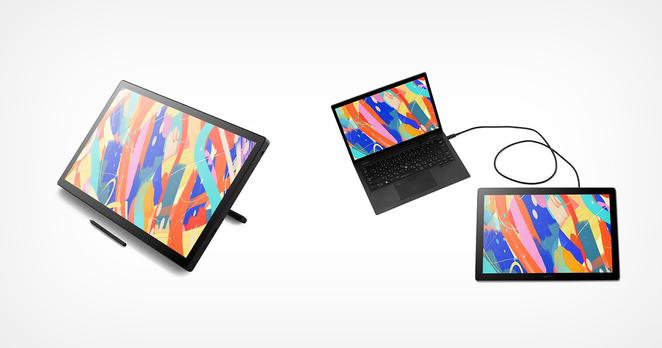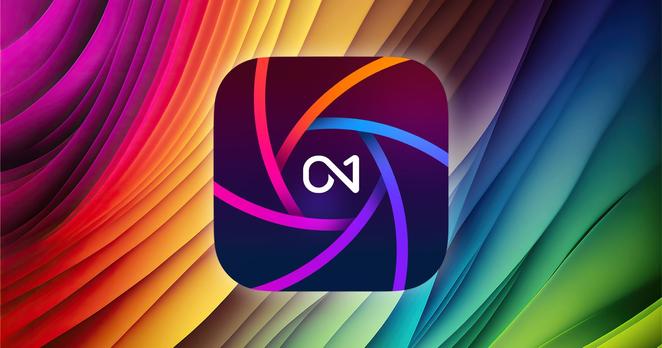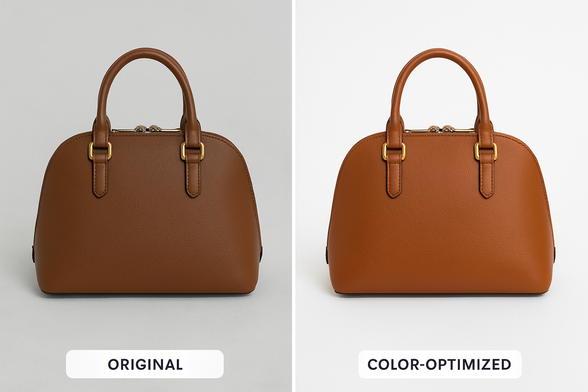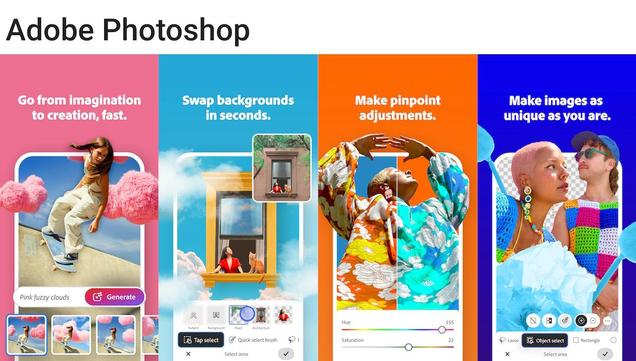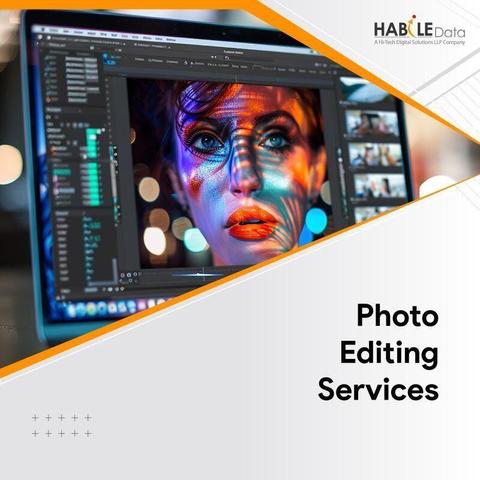🧬 Perfect Colors. Every Time.
From products to models, fashion to fine jewelry — we enhance tones, fix fades, and bring every pixel to life.
🛍️ Product | 🧑💼 Model | 👗 Clothing | 💎 Jewelry Adjustments
⚡ Ultra-clean edits
🚀 Mind-blowing pricing
🧠 E-com ready. Studio quality.
📩 ethan@graphicscycle.com
🔗 graphicscycle.com/color-correction
Color that converts. Visuals that sell.
#ColorCorrection #GraphicsCycle #PhotoEditing #JewelryEdits #ModelRetouching #VisualUpgrade
Photoshop Android Beta Arrives with Firefly AI for Image Editing and Content Creation
#AI #Adobe #AdobePhotoshop #PhotoshopAndroid #FireflyAI #GenAI #AIImages #AndroidApps #PhotoEditing
Best Photo Editing Software in 2025: Your Guide to the Top 10 Tools
Are you searching for the best photo editing software in 2025? Do you want to know which tools can take your images from good to stunning? This guide explores the best photo editing software options available right now. It covers established classics and fresh contenders alike. You’ll learn what sets each apart. Moreover, you’ll discover key features, pricing, and why professionals or hobbyists might choose one over another. Which one suits your needs? Let’s find out together.
Yes, we all know that choosing the best photo editing software can be tough. There are many tools out there, each with unique strengths. Some excel at RAW processing, others focus on AI enhancements. Are you a professional shooter, an influencer, or a beginner? Whatever your level, you need a program that fits your workflow. In this article, we’ll cover the top 10 solutions for best photo editing software in 2025. We’ll start with industry benchmarks and move to high-value alternatives. Each section highlights key features, pros, cons, and pricing. Use this as your reference to make an informed decision.
1. Adobe Photoshop 2025: Benchmark for AI-Powered Editing
Adobe Photoshop has long set the standard as the best photo editing software for professionals. In 2025, Photoshop integrates Adobe Firefly AI for generative fill, enhanced neural filters, and natural language editing. Users can remove objects seamlessly or reimagine backgrounds with a few strokes. Generative Fill blends content with remarkable accuracy. The “Remove Reflections” tool tackles window glare in RAW files with ease.
Photoshop remains unmatched for precision work. Layer management is effortless. Masking and selection tools are industry-leading. The recent “Natural Language Editing” feature lets users type commands like “brighten subject’s face” and watch the AI do the rest. This brings a level of efficiency previously unseen in pixel-level editing.
Key Features
- Generative Fill powered by Adobe Firefly AI
- Neural Filters for portrait retouching and style transfer
- Advanced selection: Object, Sky, Skin masking
- Reflection Removal in RAW files (Camera Raw & Lightroom)
- Extensive plugin marketplace
Pros
- Unrivaled precision and control
- Constant updates with leading AI tools
- Vast tutorial resources and a supportive community
Cons
- Subscription model can be pricey
- Steep learning curve for beginners
2. Adobe Lightroom 2025: Best Photo Editing Software for Workflow
If you need the best photo editing software focused on organization and batch editing, look no further than Adobe Lightroom. Its AI-powered features—Adaptive Profiles and Distraction Removal—automate routine tasks. Adaptive Profiles intelligently adjust tones and colors based on image content. Generative Remove helps you erase unwanted objects in seconds.
Lightroom’s cloud-based workflow ensures you can edit on desktop, mobile, or web and pick up where you left off. The new “Landscape Mask” auto-detects sky, foliage, water, and other elements, creating precise masks in one click. It’s perfect for travel photographers who need fast edits on location.
Key Features
- Adaptive Profiles for HDR enhancement
- Distraction Removal using AI in Camera Raw
- Landscape Mask for targeted adjustments
- Sync across devices (iPad, Android, iOS, Web)
- Generative Fill integration (beta)
Pros
- Excellent library management and organization
- Seamless mobile-to-desktop editing
- Non-destructive workflow keeps originals intact
Cons
- Limited pixel-level retouching compared to Photoshop
- Subscription required
3. Capture One: Professional RAW Editor
Capture One 16.6 stands out as one of the best photo editing software choices for studio and tethered shooters. Version 16.6.0 brings “Retouch Faces,” an AI-powered tool for natural skin smoothing and blemish removal. The new Session Builder streamlines folder setup for complex shoots. Color accuracy remains unmatched, and tethering support is seamless.
This update also includes improved library tools, deeper folder hierarchy options, and enhanced performance on Retina and 4K+ screens. AI Masking remains superior to many competitors, letting you create precise selections in a few clicks. Capture One Live allows real-time collaboration on edits with clients during shoots.
Key Features
- Retouch Faces with AI-powered controls
- AI-driven masking and background expansion
- New Session Folder Hierarchy for organization
- Superior color grading tools for precise adjustments
- Capture One Live for real-time client collaboration
Pros
- Industry-leading color accuracy and detail
- Customizable workspaces for professional workflows
- Perpetual or subscription licensing is available
Cons
- Higher cost than some alternatives
- Learning curve for advanced features
4. Affinity Photo: Cost-Effective Photoshop Alternative
Affinity Photo 2 is frequently cited among the best photo editing software for its one-time payment model. Version 2.6.0 adds non-destructive live masks (Hue Range, Band-pass) and improved RAW layer handling. The inpainting brush and patch tool now remembers sampler settings between sessions, saving time.
Affinity Photo’s interface is consistent across Mac, Windows, and iPad. New “Merge Down” commands simplify composing layers with RAW and image layers. The redesigned export dialog features always-on previews, making final outputs more predictable. For photographers on a budget, this is a game-changer.
Key Features
- Non-destructive live masks (Hue, Band-pass)
- Inpainting Brush and Patch Tool enhancements
- Raster and RAW layers in the Develop and Liquify personas
- One-time purchase (no subscription)
- PSD import/export with high fidelity
Pros
- Affordable permanent license
- Professional-grade feature set rivaling Photoshop
- Cross-platform (desktop and iPad)
Cons
- No built-in photo library management
- Some advanced AI tools lag behind Adobe’s suite
5. Luminar Neo 1.20: AI-Centric Editing Experience
Luminar Neo 1.20 is a top contender for the best photo editing software focused on AI-driven enhancements. Version 1.20 brings over 20 AI modules—sky replacement, portrait enhancement, relighting, noise reduction, and more. Luminar Neo’s “Accent AI 2.0” uses deep neural networks to optimize tone and color with a single slider.
Luminar Neo doubles as a plugin for Photoshop and Lightroom or runs standalone. Skylum’s award-winning AI tools help beginners achieve pro results quickly. Compatible with Windows, macOS, and iPadOS, it offers flexibility across devices. Luminar’s creative AI filters—from “Dramatic HDR” to “Mood” profiles—spark new artistic directions.
Key Features
- AI Sky Replacement, AI Structure, Portrait Bokeh AI
- Relight AI for targeted light adjustments
- Automatic layer creation and intelligent masking
- Plugin compatibility (Photoshop, Lightroom, Photos for macOS)
- Creative AI filters for instant artistic effects
Pros
- Intuitive AI-driven workflow accelerates edits
- Impressive creative options for quick transformations
- Regular updates from a responsive development team
Cons
- AI-based edits can feel formulaic if overused
- Requires decent hardware for smooth performance
6. ON1 Photo RAW 2025: Complete All-In-One Editor
ON1 Photo RAW claims a spot among the best photo editing software by combining RAW processing, masking, and effects into one package. Version 2025.2 introduces “Generative Erase,” powered by Super Select AI. You can remove large distractions seamlessly and fill gaps naturally. Depth Masks allow depth-aware editing, making portrait and landscape work more precise.
Other standout features include Auto Distraction Removal for dust spots and power lines, and Generative Crop to expand canvases intelligently. The layer-based workflow is robust, making ON1 a solid alternative to Lightroom for those who want one-stop editing without jumping between applications.
Key Features
- AI Generative Erase and Generative Crop
- Depth Masks for selective adjustments
- Auto Remove Sensor Dust and Powerlines
- Brilliance AI for automatic enhancements
- Portrait AI for quick retouching
Pros
- No subscription required; purchase once, use forever
- Strong AI and layer-based workflow for creativity
- Mobile version with similar editing tools
Cons
- The interface can feel cluttered at first glance
- AI credits are required for some generative features
7. DxO PhotoLab 8: Science-Backed Image Processing
DxO PhotoLab 8 often ranks as the best photo editing software for RAW image quality. DeepPRIME 3 and DeepPRIME XD2 deliver unmatched denoising while preserving fine detail. Its exclusive lens correction modules auto-correct optical flaws like distortion, vignetting, and chromatic aberration based on your camera and lens combination.
PhotoLab’s U Point local adjustment system is intuitive and precise. The new “DeepPRIME XD3” for X-Trans sensors (beta) offers exceptional results for Fujifilm RAW files. With perpetual licensing, DxO appeals to pros who dislike recurring fees. Its FilmPack and ViewPoint modules add creative and corrective options that make it more than just a RAW converter.
Key Features
- DeepPRIME 3 and XD2 noise reduction engines
- U Point local adjustments (brush-based masking)
- ClearView Plus dehaze tool for atmospheric effects
- Laboratory-grade lens profiles for true-to-camera color
- Integrated Photo Library for image organization
Pros
- Best-in-class noise reduction and detail retention
- Precise optical corrections with minimal manual intervention
- Perpetual license, no subscription model
Cons
- Limited creative filters compared to other editors
- Less intuitive interface for brand-new users
8. Corel PaintShop: Value-Driven Editing
Corel PaintShop Pro remains a popular choice among Windows users seeking the best photo editing software without subscription fees. The current version offers robust AI tools: Denoise AI, Upsampling AI, AI Style Transfer, and AI Background Removal. These features rival many paid competitors and keep workflows efficient.
Highlights include the AfterShot Lab for RAW editing, Focus Stacking for enhanced depth of field, SmartClone for composite creation, and refined UI workspaces that adapt to your skill level. The Essentials workspace helps new users find core tools quickly, while the Complete workspace reveals advanced features. Despite limited major updates in mid-2025, PaintShop Pro stands out for its one-time fee and lifetime license.
Key Features
- AI Denoise, Upsample, and Style Transfer
- Focus Stacking for extended depth of field
- AfterShot Lab for RAW adjustments
- Instant background removal and healing tools
- Layer-based editing with unlimited layers
Pros
- Lifetime license with no subscription required
- Powerful AI tools for photo cleanup and enhancement
- Beginner-friendly workspaces ease the learning curve
Cons
- Available only on Windows (no macOS support)
- Feature updates are less frequent than some competitors
9. GIMP: Free, Open-Source Powerhouse
GIMP might be the best photo editing software for those on a budget or preferring open-source solutions. Released in March 2025, GIMP 3.0.4 adds non-destructive editing for filters, better PSD compatibility, and on-canvas previews for most operations. Its integration with GEGL means quicker high-bit-depth operations and smoother workflows.
New features include multi-layer selection, enhanced color management with expanded Adobe RGB support, and improved text tools that follow modern CSS standards. While GIMP lacks some of the AI tools found in paid software, its extensive plugin ecosystem (including GIMP-ML for AI-based filters) compensates for many advanced needs. For photographers comfortable with learning open-source tools, GIMP offers immense flexibility.
Key Features
- Non-destructive filters and live previews
- Expanded file format support (BC7, improved PSD import/export)
- Multi-select layers and off-canvas editing environment
- Powerful scripting and plugin support (Python, Scheme)
- Completely free under the GNU GPL
Pros
- Totally free and open-source—no cost barrier
- Fully customizable with scripts and a vast plugin repository
- Cross-platform (Windows, macOS, Linux)
Cons
- Less intuitive UI for newcomers compared to commercial products
- Lacks native AI-assisted features; relies on plugins for advanced automation
10. Adobe Express: Streamlined AI-Powered Creativity
Adobe Express now claims a spot among the best photo editing software for 2025 by blending ease of use with powerful AI features. Unlike full-fledged editors, Adobe Express focuses on rapid, on-the-go edits and design integration. Its AI Photo Editor includes “Magic Edit,” “Magic Eraser,” and “Auto Enhance.” You can remove backgrounds, adjust lighting, or swap out skies with simple text prompts. It leverages Adobe Firefly technology under the hood, making complex edits feel effortless.
Beyond photo editing, Adobe Express offers thousands of templates for social media posts, flyers, or web banners. Integration with Adobe Stock provides instant access to millions of high-quality assets. Collaboration is streamlined—users can share live links to projects, invite feedback, or schedule social media posts directly from the platform. For marketers, influencers, and small business owners, Adobe Express combines creative flexibility with a minimal learning curve.
Key Features
- Magic Edit & Magic Eraser powered by Adobe Firefly AI
- One-click Background Remover with smart masking
- Auto Enhance for instant exposure and color correction
- Extensive template library for social media, print, and web
- Built-in Adobe Stock integration and collaboration tools
Pros
- Extremely user-friendly for non-designers and busy creators
- Constant addition of AI features keeps it cutting-edge
- All-in-one platform: photo editing → design → publishing
Cons
- Not intended for detailed, pixel-level retouching like Photoshop
- Subscription required for full access to AI features
By now, you’ve seen what the best photo editing software in 2025 offers across different needs and budgets. Adobe Photoshop remains unmatched for high-end precision work. Lightroom excels at batch processing and organization. Capture One leads in RAW processing and tethering. Affinity Photo and Luminar Neo provide affordable paths to professional results. ON1 Photo RAW and DxO PhotoLab shine with AI-driven masking and superior noise reduction. PaintShop Pro and GIMP cater to those preferring lifetime licenses or open-source ecosystems. Finally, Adobe Express offers an AI-first, quick-edit solution for modern content creators.
Which software will you choose? Consider your workflow, budget, and specific feature needs—whether it’s generative AI fill, advanced masking, or seamless collaboration. Armed with this guide, you’re ready to pick the best photo editing software for your 2025 projects. Enjoy editing!
Feel free to find other inspiring content in WE AND THE COLOR’s Photography and Technology categories. For those interested, feel free to take a look at our review of the best graphic design software in 2025 (top 20 tools).
#bestPhotoEditingSoftware #photoEditing #photography #software
Elevate Your Brand and Business with Pro Photo Editing Service
Transform your #visuals with expert image editing and retouching services! High-quality images can significantly impact your marketing efforts, whether in e-commerce, real estate, or any other industry.
Learn how our professional editing services can make your images stand out and capture attention here:
#ImageEditing #PhotoRetouching #PhotoEditing #eCommerce #Marketing #Photography
Wo die Zwerge auf Schweinen reiten
Where the Dwarves Ride the Pigs
Dezember 2019
#Illustration zu #GünterWallraff - Der Aufmacher -> https://blog.goehde.com/index.php?/archives/153-Der-Aufmacher
#gartenzwerg #FakeNews #blöd #illustrationen #digitalart #gmic #gimp #fotobearbeitung #digital #GardenGnome #stupid #PhotoEditing #drawing #krita #art
The blog post “Tips for Beginner Model Photo Editing” at https://ukclippingpath.com/tips-for-beginner-model-photo-editing/ by UK Clipping Path offers a wealth of actionable advice for anyone starting their journey in photo editing
#ecommerce #photoediting #service #photoretouchigservice
Choosing the Right AI Image Tool?
Start with your goal: restore old photos, enhance portraits, or apply creative filters?
🖼️ Tools like Remini AI are great for one-tap face enhancement and clarity.
✅ Look for ease of use, output quality, and feature set.
💡 Test before going premium.
